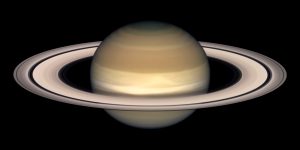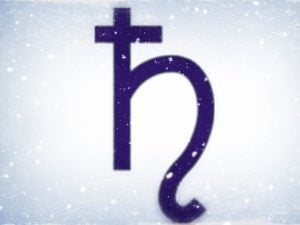
Let’s take a look at Saturn. I mean literally, let’s take a look at Saturn.
See that ring? Beautiful, isn’t it? What most people don’t realize about Saturn’s rings are that they are composed of billions of tiny little particles all held in a perfect dance between gravity and momentum, maintaining their fragile design despite all odds or (seemingly) common sense. It’s only recently that our technology has enabled us to look at them up close and appreciate the ridiculous level of complexity it takes to hold them together.
And yet, the rings persist. Saturn, it seems, knows exactly what it’s doing when it imposes order on a complex system. This applies to you and your life as surely as it does to these little granules traveling their paths far far away from us.
***
Before the telescope, all Saturn was to us was a pale yellow dot traveling the most slowly of all the wanderers in the sky. It took about 29 years to travel once around the sky, and back then most people who managed to make it to that age knew that it was likely all downhill from there, once that had happened. No wonder that people felt like Saturn was a little blot of jaundice in the sky: much more an indicator of suffering than support.
But in 1608 a Dutch eyeglass maker named Hans Lippershey came up with the idea of fitting lenses together in such a way that they magnified distant objects, and a couple of years later (once Saturn had moved on to the other Sign it traditionally rules, Aquarius) Galileo refined, and (in that revolutionary spirit) decided not to use the telescope as a novelty or a navigational aid. He pointed it to the sky and saw things no one had ever seen before, and changed our conception of the Universe forever, bringing us closer to Truth.
It would have never happened without the hard work of Saturn in Capricorn.
***
Like our planet and every other planet in our solar system, Saturn tilts back and forth on its axis. Thus, at various points during its orbit the rings are edge-on to us, all but invisible from Earth. From our perspective they wax and they wane of the course of Saturn’s path around the Sun. When Saturn is pointing its North or South Pole most precisely in our direction, the rings are most visible. When that happens, from our perspective Saturn looks like a big yellow eye, staring unblinkingly at us.
Saturn is now at that point in its orbit. Saturn in Capricorn sees you.
***
There is nothing to fear about this. Saturn brings challenges, sure. But Saturn ultimately does it with love, like a parent who firmly insists that you can’t eat a ton of sugar before you go to bed. Sure, you’d like to, but that’s a bad thing. Everyone loves Venus, and Venus rules sweetness, but ask a diabetic how that can turn out sometimes.
Still worried about Saturn in Capricorn, and what it has in mind for you? The come back tomorrow when I’ll be taking a more detailed look at Saturn throughout 2018.

